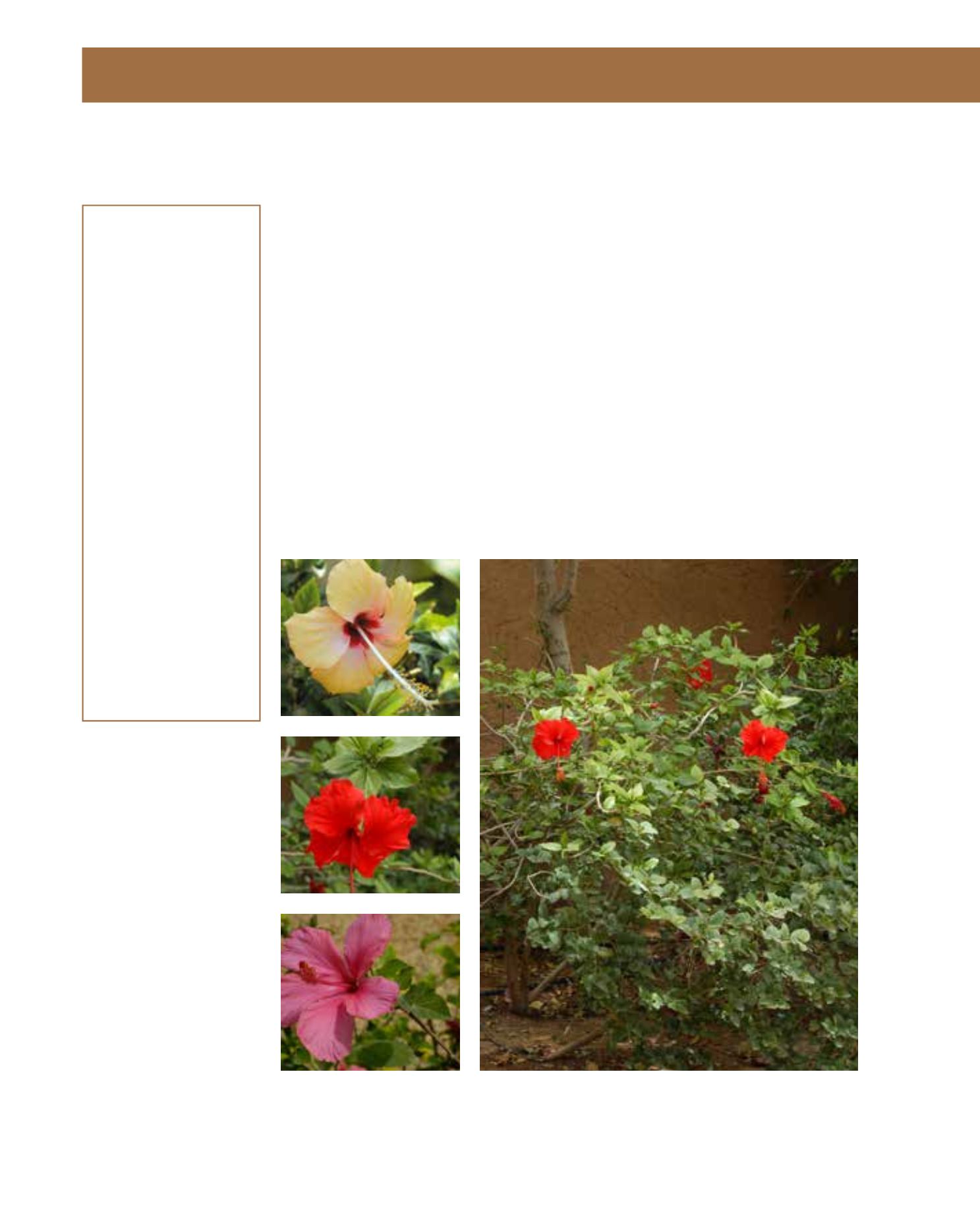

GENERAL
Origin
:
sub-tropical,
tropical
Vigour
:
fairly fast
growing
Humidity
:
semi-humid, very
humid
Propagation :
cuttings
Maintenance :
high
CONDITIONS
Urban climate :
resistant
Dessication :
vulnerable
Stagnant water :
vulnerable
Irrigation
:
high
Salinity/ppm :
low (600 ppm)
Hardiness
:
-3°C
SHAPE
Type
:
shrub
Height
:
2 m-5 m
Spread
:
2 m-4 m
Foliage
:
evergreen
FLOWER
Colour
:
red
Size
:
9 cm
Period
:
FRUIT
Type of fruit :
schizocarp
Fruit size
:
3 cm
Toxicity
:
inedible
Since it is no longer found in the wild, the origin of this plant is uncertain, although sinensis indi-
cates a Chinese background. This was once a very common shrub in Arriyadh, but its susceptibi-
lity to frost, disease and insects seems to have made it rare. Various cultivars exist, with single or
double flowers in shades of white, yellow, pink, orange and red. It is very easy to multiply Chinese
Hibiscus by hardwood cuttings of 20 cm in length when the leaves are reduced to a third and the
sticks are covered to retain humidity. Brief periods of frost may damage the twigs, but the bushes
quickly recover and also flower within the same year. Annual cutting back, exhaust fumes and
considerable dryness are tolerated, but they may result in slow growth and a reduction of flowe-
ring. Even some salinity is tolerated, but the leaves show chlorosis and may even be dropped. This
species is usually evergreen and produces dark-green, shiny foliage. In its native habitat, Chinese
Hibiscus flowers all year round. Elsewhere, flowers are produced when temperatures exceed 18°C.
Above 25°C, the flowering is reduced, so that Chinese Hibiscus in Arriyadh flowers in spring and
in autumn, but rarely in summer. In dry areas, the plants appreciate an occasional spray with the
garden hose. Fertiliser should be applied frequently to encourage a prolonged period of blossom.
When the leaves turn yellow between the veins, iron chelate is the appropriate remedy. Usually
this chlorosis appears where the ground is alkaline and lacks humus.
161
Hibiscus rosa-sinensis,
Malvaceae
Chinese Hibiscus
















